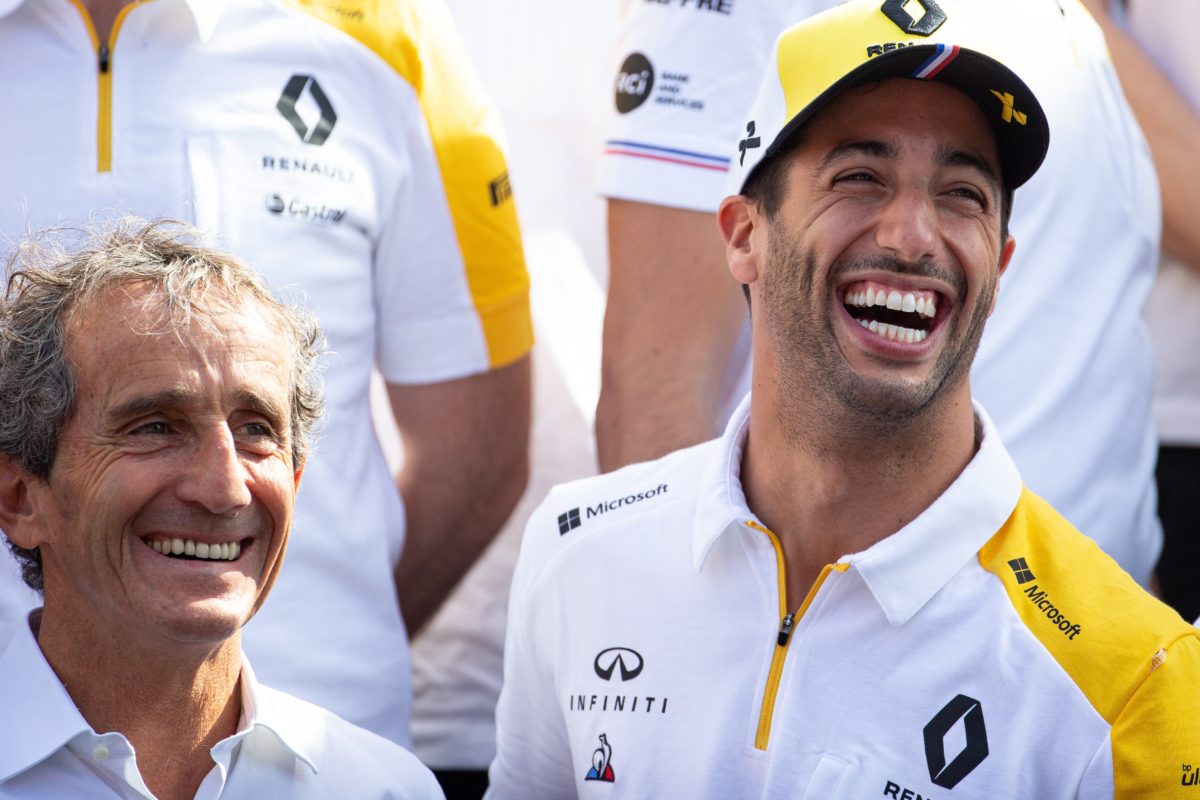

With Alpine on the hunt for a Formula 1 driver to replace Fernando Alonso, there are strong reasons why Daniel Ricciardo is the best bet.
The Australian is one of a number of drivers who have been linked with the gig first offered to, and infamously rebuffed, by Oscar Piastri.
While the rights and wrongs of that decision have been well documented and debated, the simple fact is that Alpine has the most desirable seat available on next year’s Formula 1 grid, and that includes McLaren.
Since returning to F1 at the start of last year, Alonso has proved to be as combative as ever.
He’s an experienced driver who appears to have mellowed in his latter years, though clearly remains more than capable of playing the political game in the paddock.
His value to Alpine was largely connected to his experience which would help drive the team forward, while his profile would help raise awareness for the boutique manufacturer as the Renault Group looks to build its awareness.
Alonso was therefore a logical fit when Ricciardo opted to switch to McLaren for 2021.
Now, 18 months down the line, the Australian could well be exactly the type of driver the team wants.
Like Alonso, Ricciardo is combative and relentlessly competitive. But at the same time, he knows when to pick his battles and has experience such that he can read a race.
He knows how to win races, an important point and one which lines up with Alpine’s own stated ambitions to become a championship contender in the near future.
Ricciardo doesn’t have experience challenging for world titles, but then nobody on the market does.
Scratching that from the list, in terms of race wins and probability of success, he is arguably the safest pair of hands available.
However, his value doesn’t stop there.
Ricciardo is one of the most popular drivers in Formula 1 and is globally recognisable.
He is well-liked by the media and is a strong ambassador, just ask McLaren’s Zak Brown.
“Daniel’s a great ambassador; for the sport and McLaren, he’s one of the most popular drivers in Formula 1, motor racing,” Brown said when asked by Speedcafe.com what considerations, aside from performance, went into the decision to terminate Ricciardo’s contract.
“Our partners put their trust in us that we’re always going to put forward our best efforts to perform and certainly we’ll miss Daniel’s popularity, I think we’re fortunate in that we have a driver like Lando Norris, who’s immensely popular with the fans and the sponsors.
“And I presume that whoever our driver that sits up alongside Lando, next year in Bahrain will drive a lot of popularity, as well.
“But you know, when we make our decisions, they are performance-led and fortunate that McLaren has had a quite an illustrious group of Grand Prix drivers over our 59 years since we’ve been racing.”
Alpine is in something of a similar position in that a high-profile driver has value to the brand commercially.
Therefore, Ricciardo offers a better potential return on investment than Gasly, at least on that front.
Of course, Gasly is French, and the Renault Group is typically parochial if given the opportunity, but it has that market ticked off already with Esteban Ocon – who is also a race winner, of course.
With little to nothing between Gasly and Ricciardo in terms of performance, it would likely be the commercial considerations that come to the fore.
On that front too, Ricciardo appears to be the better bet – not only for his marketability.
It is an inescapable fact that the 33-year-old’s market value is the lowest it has been since he made his Formula 1 debut in 2011.
The extension of that is his negotiating power will be equally diminished and the days of commanding top dollar in terms of salary are gone, at least for now.
Alpine could therefore come in and pick him up for a song, and potentially go so far as to offer a results-based remuneration package that would further mitigate its risk, at least financially.
From Ricciardo’s side, Alpine is unquestionably the most competitive package available and therefore has to be the most desirable if he’s serious about continuing his career.
A move to Haas would see him join a team that is effectively the Ferrari junior team, a relationship that is likely to only deepen as Sauber Motorsport begins to shift its allegiances to Audi.
It’s therefore difficult to imagine the squad being any more than solid midfield contenders at best, at least for the foreseeable future.
The only other option is Williams.
Though it has received fresh investment in recent years courtesy of a change of ownership to Dorilton Capital, it remains largely rooted to the rear of the grid.
While it has been something of a saviour for Alex Albon, he is at a very different stage of his career and doesn’t have the runs on the board Ricciardo does.
For Albon, the drive at Williams is about reasserting himself, proving he is F1 quality and can drive a team forward.
Ricciardo has already demonstrated his pedigree, so while his signing would be a PR coup for the squad, it would not do the Australian’s career any real service.
Joining Alpine would of course see him returning to the squad he left just 18 months ago, though that is not necessarily a bad thing.
Fernando Alonso has come and gone from the operation on multiple occasions, and Ferrari paid Kimi Raikkonen not to race in 2010 and 2011 before employing him again in 2014.
Drivers returning to a former employer is therefore not uncommon nor unusual.
Within the team, the management structure has changed, with former team boss Cyril Abiteboul departing at the end of 2020.
What replaced him was a convoluted structure where responsibilities were shared between Laurent Rossi, Marcin Budkowski, and Davide Brivio.
That has since been simplified somewhat with Otmar Szafnauer joining at the start of the year as Team Principal.
Rossi remains involved as Alpine CEO, though is more of an overarching figure, having joined at the start of 2021 following a stint with Google.
Even Renault Group CEO, Luca de Meo, was not in the position he is now when Ricciardo made the call to leave the team in May 2020 – de Meo only took up his current job in July that year.
Of course, it makes sense to talk to other drivers for a multitude of reasons; in case negotiations with the preferred candidate stall or break down, or to apply pressure and strengthen one’s position in contractual discussions.
Alpine then is in a position of power, with Ricciardo seemingly the ideal fit to replace Alonso in terms of on- and off-track benefits to both the team and the broader brand.





















Discussion about this post